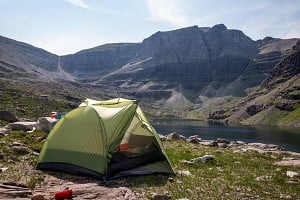
The Macpac Sololight is a one person, transverse-hoop, backpacking tent. It has been tested through last autumn in cold, wet and windy weather; in full-winter conditions with snow on the ground and on nights of more snow falling and drifting; and more recently in friendlier summer conditions but including a night with a thunderstorm and torrential rain. The tent performed well across the seasons, the only caveat being that the transverse-hoop design is completely reliant on being well pegged out – so the Sololight will not be the best tent for environments where pegging is hard, such as in deep snow or very rocky areas with little or no topsoil. Fortunately both of those situations are rarely found in the UK, so for a British-based solo hiker or backpacker wanting a light tent for all but the very worst winter conditions, the Sololight is an excellent option.
Interior size
This tent is very much a one-person shelter with its prime focus being on low weight – and this of course means compromising on space and features that might add to the "liveability" of a tent. The inner tent is 88cm wide at the mid-point and slightly less at the foot and head. Put down a full-size mat like a RidgeRest and it covers most of the floor.
The overall length of the tent is 220cm, although with the hoop being in the middle, the ceiling slopes towards the head and foot regions. This isn't too bad because the Sololight use two little poles that are placed in pockets and eyelets at either end (a basic idea it shares with the Terra Nova Laser competition and Hilleberg Enan) giving about 30cm of headroom at each extremity. I'm just under 5'10" and I have plenty of room. If my feet are at one end, there is still perhaps 30cm of space behind my head and the inner tent roof is well away from my face.
Taller folk will find the inner tent ceiling closer to them as they need all the inner tent space, but the little spacer poles at the end do help in this regard. Macpac say the tent is 93cm at it highest point, and I can sit up easily there without my head touching anything. This is pretty much where you need to sit to do anything like cook in the porch, and it is comfortable enough to do this.
Porch space
The single pole runs across the tent and extends the fly sheet out away from the inner tent on one side, providing a porch space. The zip door opens the tent only on one side of the pole. If pitched with the door away from the wind, this creates a sheltered spot where you can cook, but you do have to plan this when pitching and hope the wind doesn't change direction too much.
There is a reasonable amount of space in this vestibule for boots, an empty pack and the like, and stuff kept there has remained dry and protected as you would expect. Nevertheless it is worth saying again, the Sololight is a small tent so there isn't a huge amount of space. Also, when you have the tent door open, it isn't like a fully protected porch on a bigger tent: the odd drip can fall into the inner tent and if it is raining, your hands might be in the rain as you cook in the open door. For a backpacker's tent where you are likely to spend just one night in it before packing up and moving on, this seems a good compromise in return for a low-ish weight. If you think you might be living out of the tent pitched in one place for some time, I think I'd favour having a more spacious and protective vestibule.
The Sololight isn't palatial but you can sit up in it, lie down and stretch out and store your kit out of the snow or rain. In contrast to some lightweight one-person tents, this is much more than just a glorified bivvy bag.
Materials
Since I began this review a new version of the Sololight has been introduced (the hazard of a long-term test!). The updates all involve the fabric, with the design, dimensions and other features remaining unchanged.
My older version has a 20d nylon fly, and inconveniently I had to seal the seams myself before first using it. Very sensibly, for the Sololight V2 Macpac now tape the seams in the factory. That nylon fly has also been replaced with 20d polyester. Why?
"Polyester is better than nylon for a lightweight tent because it doesn't stretch as much when wet" say Macpac, "allowing for a more taut pitch. It's also more UV resistant (and we have also found it to be stronger, with our manufacturer conducting a tear strength test showing 20d polyester to be stronger than 20d nylon)."
I've found the original nylon fly to be perfectly good in the rain, and not noticeably saggy when soaked, but over time the polyester's greater UV resistance is likely to give the Sololight V2 a longer lifespan.
Underneath you get a tough 40d nylon ripstop groundsheet, while the 8.5mm DAC Featherlite NSL aluminium pole is also suitably robust.
Pitching
I've found the Sololight easy to pitch on my own, even the first time in the dark, high on a remote moor when I had optimistically not brought the instructions. Another late night on Kinder, but this time in moderate blizzard conditions, and again I had no trouble pitching it and was soon snug in my sleeping bag inside brewing a cup of hot chocolate.
To fully pitch it, on my own, takes 6 or 7 minutes. The Sololight goes up with the inner and outer together, I believe like all Macpacs, which makes it quicker to pitch than most small tents. Personally I find that inner-first tents are usually OK even in soggy UK conditions, but there is a lot to be said for the "inner and fly together" designs that makers like Macpac and Hilleberg favour, where the two components of the tent can be kept clipped together and go up in one. They are less faff, and arguably better if you're unlucky enough to be putting up your tent in sheeting rain. The only real disadvantage I find is that early in the morning when your tent is still covered in dew, or wet from rain, the inner is likely to get wet as you take it down and pack it. With the Sololight you can separate the fly and inner, but it is a bit of a fiddle.
What Macpac call their "multiptich" system means that you can save weight by erecting the tent fly-only (more like a tarp); or inner-only if you are sure the only thing you need protection from is insects. Outside my garden I've not tested it in either of those configurations, since I think double skin tents remain the best option for most British mountain conditions. I'd expect to continue using the Sololight mainly in that way - but it's always good to have options.
What's it like in bad weather?
As noted above, transverse-hoop designs tend to rely on being well pegged down. The Sololight has plentiful pegging points and guylines. I get a bit obsessive about having a well pitched tent, but this little tent has proved to be solid in stormy conditions, in heavy rain, high winds and even when loaded by wind-driven snow. Having it drum tight and well-guyed makes it into a worthy three/four season shelter. With the pegs being so important it was disappointing to find that Macpac don't supply enough for all the peg loops and guylines. The tent came with nine pegs but I had to add five more of my own to use every peg point available.
The inner is entirely a fine mesh. I've found tents with mesh inners in the past to make poor winter tents, being draughty, cold and even having wind-blown powder snow or fine rain-splash actually making it through the mesh. But this has not been a problem at all with the Sololight. The inner tent is close to the outer, but very well cut so it doesn't touch it, and the fly comes low to the ground giving very good protection in conjunction with the bathtub groundsheet. This has led me to reconsider my previous view: when it comes to bad weather comfort inside a tent, I now think the cut of the inner is perhaps as important as the material it's made from.
Macpac suggest the Sololight is best used below the snowline, and in general this is probably true. However if you are an experienced camper with a few tricks up your sleeve, this is a tent that will shelter you through poor weather in the British winter hills. I'm sure there are other light tents that can also do that, but I've certainly tried a couple that don't.
Weight
If we subtract the weight of my additional pegs in the table above, my weight for the Sololight is very close to Macpac's claimed 1.25kg. This isn't actually particularly light for a high-end, one person, double skinned tent. A reasonable number of tents in a similar price range claim to weigh around - or a bit under - one kilo, but I've seen some tents that claim to be one person (or even two person) that are laughably small inside, or for which the claimed weight doesn't include things like pegs or even poles! For its robustness, the Sololight is definitely light.
Thanks to its new materials and the seam taping, the new Sololight V2 has gone up from an official weight of 1.25kg to 1.29kg, a modest weight increase for what seems an improvement.
Summary
Overall the Sololight is a well made, well designed, serious tent that works well in serious conditions. It might not be the most spacious option but it packs a punch in terms of performance for its fairly minimal weight. Once again Macpac have shown that what works well in New Zealand conditions is also well suited to the British uplands. At £370 it's not cheap, but I do think it's value for money.
Macpac say:
Engineered for minimal weight, optimal space and weather protection in the harshest conditions New Zealand has to offer, the Sololight has earned its name. The tent weighs in at just 1.29kg, and with a single ridge pole, plus two small struts at each end, the Sololight tent maximises liveable volume. The factory seam-sealed fly is constructed with UV20™ PE fabric, a quality material that strikes the balance between weight and performance. Coated with silicone on the outside to repel moisture and PE on the inside for waterproofness, UV20™ PE offers the weather protection you need during the summer. The Sololight utilises mesh extensively throughout the inner, allowing greater airflow for comfort in warmer climates. A generous vestibule provides space for cooking and gear. The Sololight is designed to support a single person tramping or trekking below the snowline in summer.

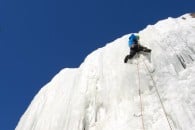

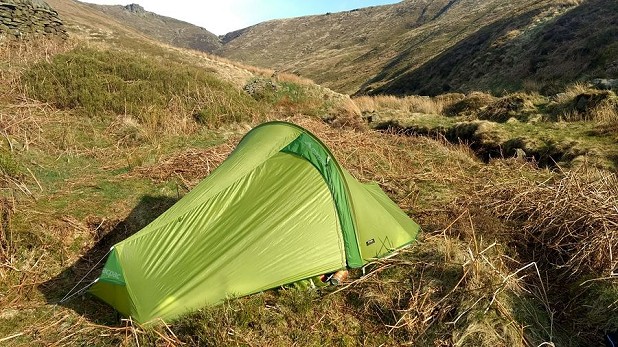
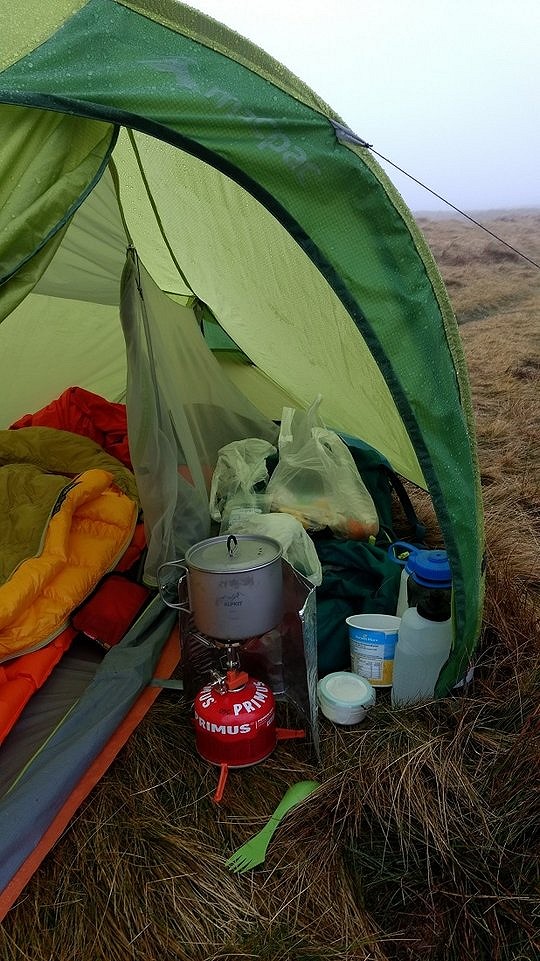
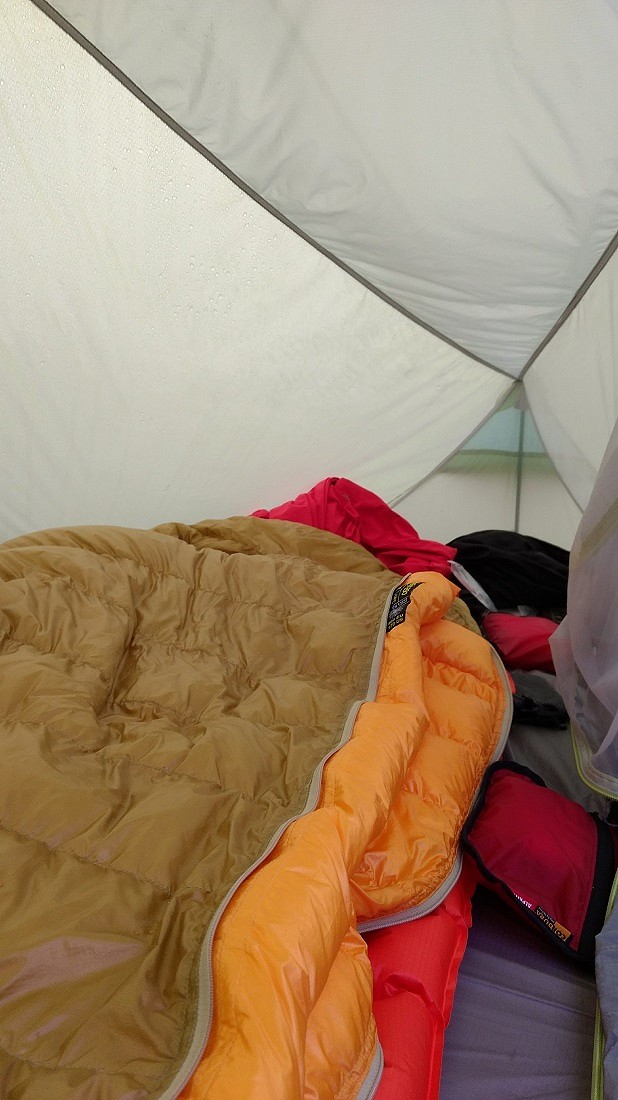
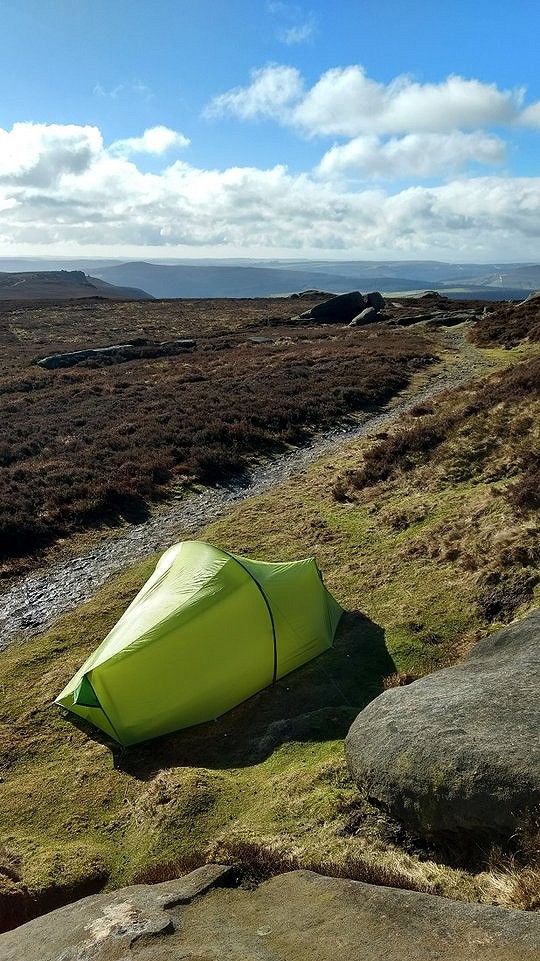
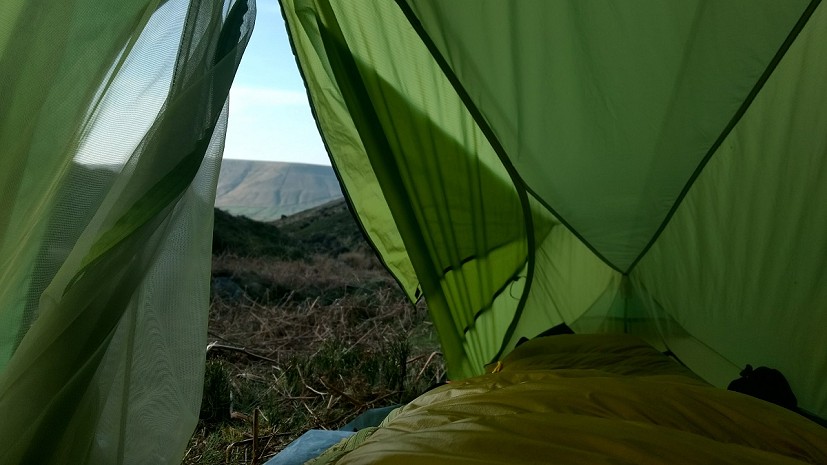
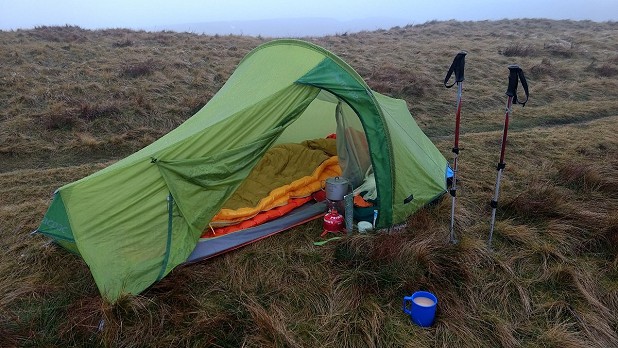


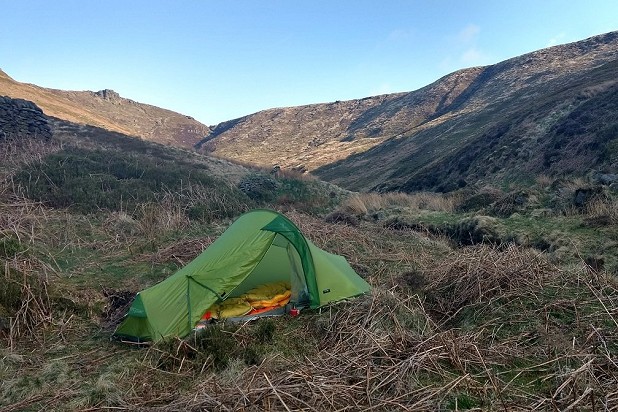
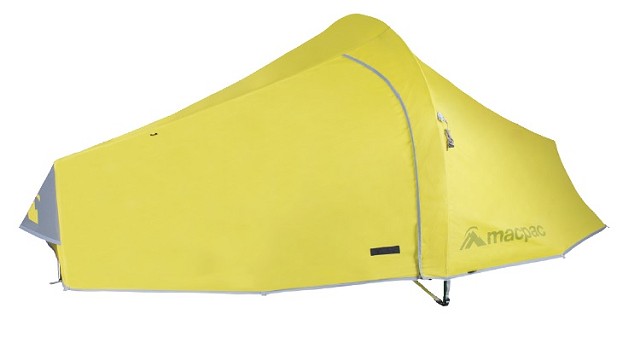
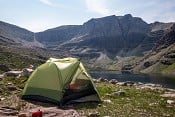
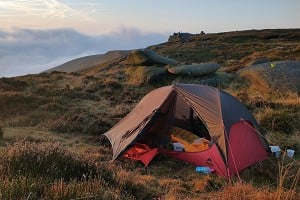
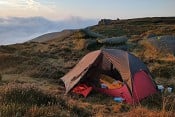
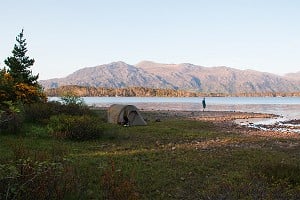
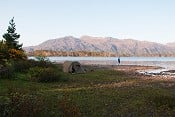
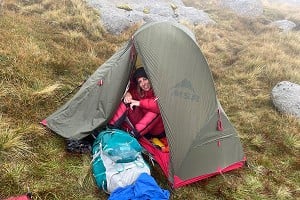
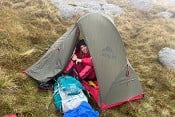
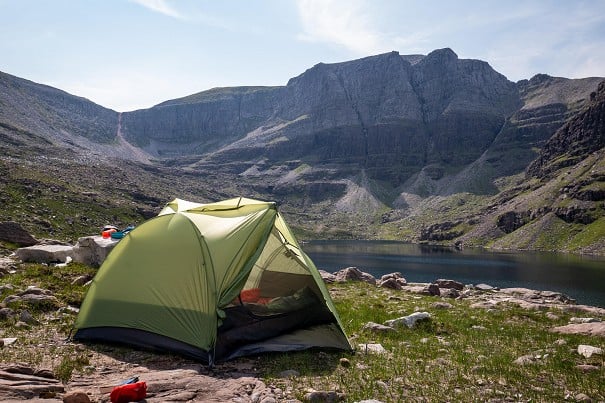

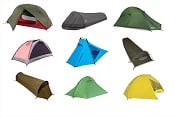
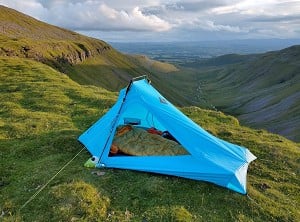
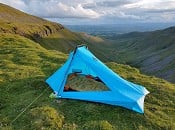
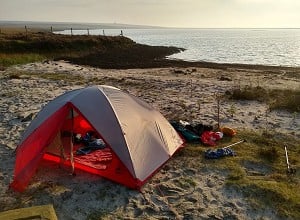
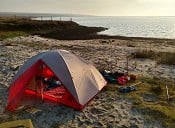
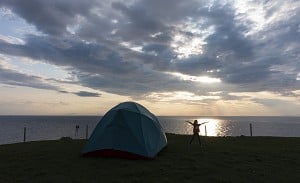
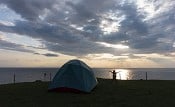
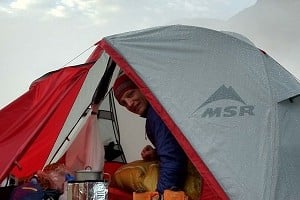
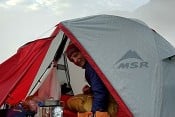
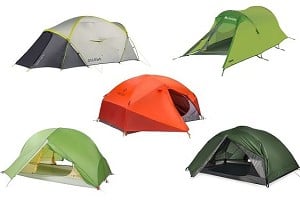

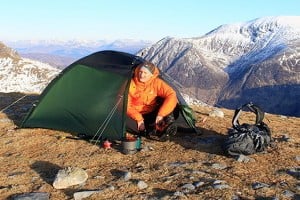
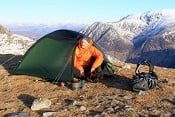
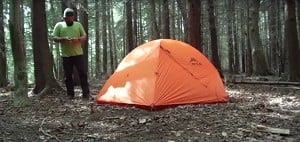

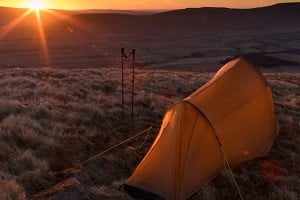
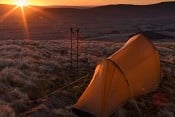
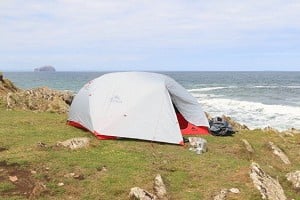
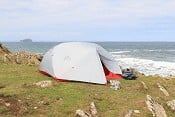
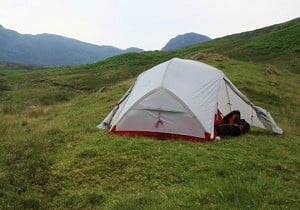
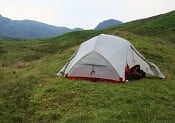
Comments
How do the large side panels stand up to wind?
I must admit, I've not used the tent in this review, but I've used a number of similar designed tents from various brands at all kinds of prices and suggesting this is a 3-4 season tent is pushing it a bit surely?
Snow on the ground doesn't make it winter in terms of tent reviews in my mind. A 3-4 season tent would be more like a Terra Nova Voyager surely.
These lightweight tents are flipping ace, but they have their limitations.
I've always pitched it end into the wind and not had any problems, but even with wind shear, I've not noticed any issues once its pegged out well. Of course it will flex and get buffeted about, but it seems pretty solid. Because it is a small tent, those side panels are actually that big, and its shape is pretty aero both across and end on.
Did you watch the video? That was a windy day, you can get an impression from the heather moving and sun coming in an out despite it obviously being sped up. You do see the tent flex, but it's not much. It's really well cut so pitches drum-tight.
I should add though I'm a bit of a tent-pitching perfectionist. I find it very hard not to judge people for sloppily pitched tents and have to remind myself that a loose guylines and saggy fly sheets doesn't necessarily reveal a poor moral character, although I have my suspicions. ;-)
Well I've used it in a winter blizzard (the pictures in the review and in the video are at about 600 mtrs on an open hillside on Kinder - it snowed through that night and it just slid off the tent. Yes, if you were out in storm that put down 30 or 40 cms of snow, it would start compressing in on the tent but with I imagine 5-10 cms of snow coming down on the tent there was no problem at all (although there was a strong wind, which both helps and hinders in terms of the tent taking a snow load). But there is no flat area on the top for snow to start building up on that you do get with geodesic and semi geodesic designs.
It's not a big tent though, living in it for numerous nights in winter conditions (be that in snow and freezing temperatures, or British soggy-cold conditions) would get old soon. Nevertheless, I'm quite happy using it in British winter conditions within reason for a night or two.